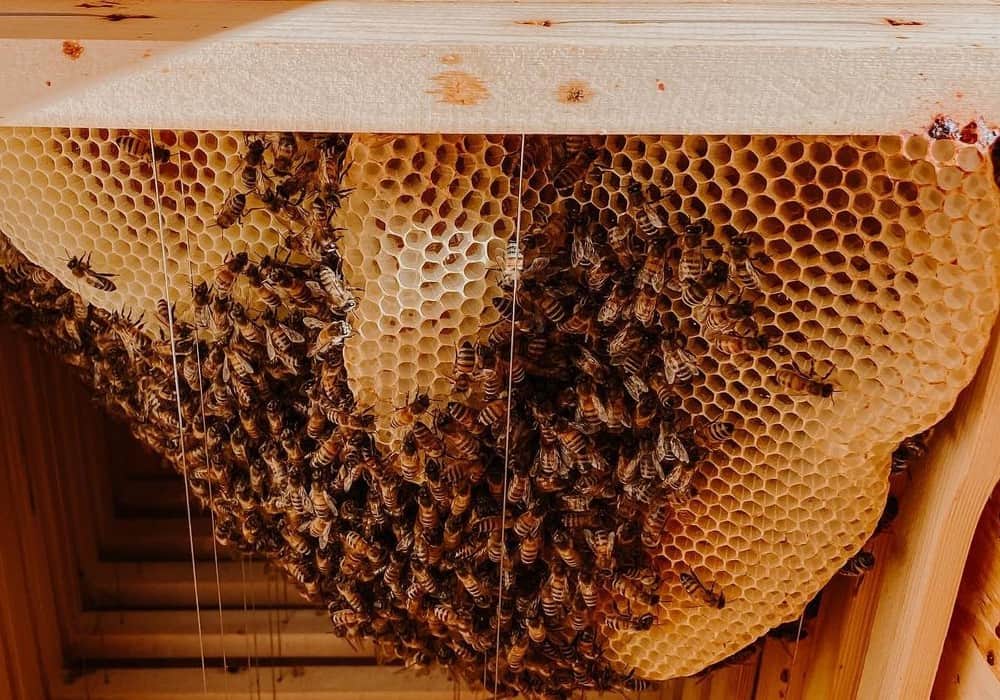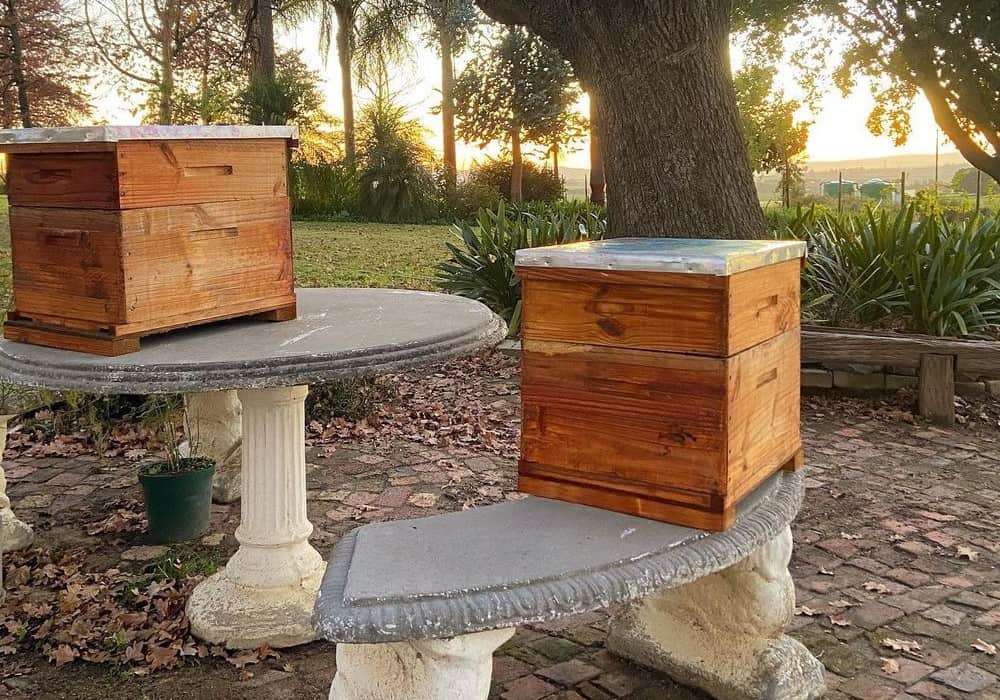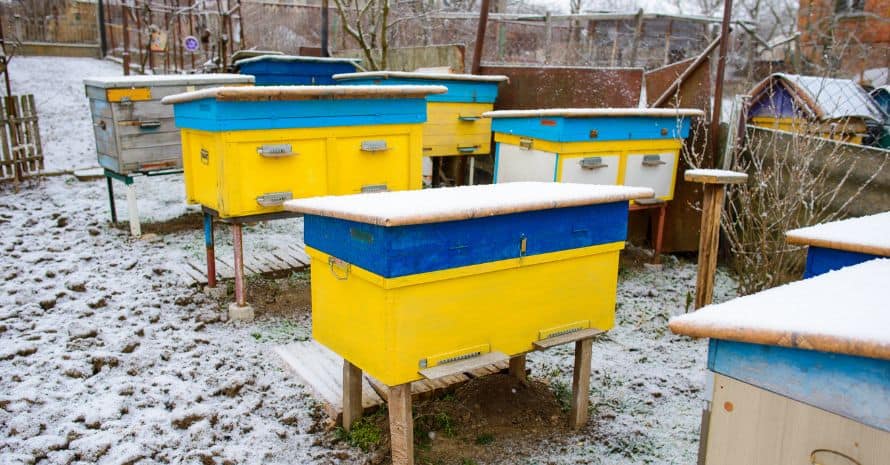There’s a new way to keep bees that’s gaining in popularity, especially among people who live in cities: horizontal hives.
Traditional beehives are typically stacked vertically, with each box housing a different level of the hive. But horizontal hives are laid out horizontally, with the bees living on one long, continuous ledge.
Proponents of horizontal hives say they’re easier to manage than traditional hives because there’s no need to lift heavy boxes. They’re also easier to access, making it easier to inspect and harvest honey.
In this article, you will learn all about a horizontal beehive. You can also learn about other types of hives and their advantages and disadvantages.
Pros:
- Horizontal hives allow the bees to move more easily between the frames.
- Horizontal hives are easier for the beekeeper to inspect.
- Horizontal hives are less likely to collapse than vertical hives.
Cons:
- Horizontal hives can be more difficult to build than vertical hives.
- Horizontal hives can be more difficult to harvest honey from than vertical hives.
Types of Horizontal Hives
There are a few types of horizontal hives, but the most common are Langstroth hives and Warré hives.
Langstroth hives are the most common type of horizontal hive. They are named after their inventor, Rev. Lorenzo Lorraine Langstroth, and were first patented in 1852. Langstroth hives are very popular because they are easy to use and easy to build. They are also easy to inspect, and the bees can be easily removed from the hive if necessary.
Warre hives are a type of horizontal hive that was invented by Abbé Émile Warré in the early 1900s. Warré hives are designed to be more natural for bees, and they are easier to build than Langstroth hives. Warré hives are also easier to inspect than horizontal Langstroth hives, and the bees can be easily removed from the hive if necessary.

Horizontal vs Vertical Bee Hives
| Advantages | Disadvantages | |
|---|---|---|
| Horizontal hive | 1. Great if you have physical limitations because you can place the hive at your desired height. 2. Can be a more economical option for those on a budget as it’s easy to build yourself. 3. Less invasive for bees, meaning you won’t have to use your smoker as frequently. 4. Easy to inspect without the need to lift heavy boxes. | 1. Designs are not standardized, so measurements vary from hive to hive – this can make it difficult to find the correct size parts. 2. Not as common as the vertical hive, making it possibly more difficult to find equipment or resources. |
| Vertical hive | 1. It’s more easily moved if you need to do so. 2. It’s the most commonly-used beehive, meaning equipment and resources are more readily available than other options. 3. The foundational frames allow for more stable comb and are great for new beekeepers. | 1. Removing the lid to inspect the hive is more obtrusive to the bees, meaning you may need to use your smoker more often. 2. Each box can become quite heavy once filled with honey, making it difficult to lift. |
Horizontal Hives for Sale
Here is an example of a good horizontal hive.
If you’re looking for a stylish and functional beehive, the MayBee 5-Frame Nuc Beehive for Bees is a great option. This beehive is made from waxed cedarwood and pine, and features a beeswaxed plastic foundation that ensures the health and safety of your honey.
The honeycomb frame is designed with dovetail joints for easy installation, and the entire hive is pre-assembled and waterproof to help keep the interior dry. The nuc box holds 5 frames and foundations, providing ample space for honey collection. The MayBee 5-Frame Nuc Beehive for Bees is easy to assemble and comes with everything you need to get started.
How to Care for Bees in a Horizontal Hive
Here are some tips on how to care for your bees:
- Check your hive regularly. At least once a week, you should open up your hive to check on the bees. Make sure they have enough food and water, and look for any signs of disease.
- Keep your hive clean. Regularly clean out any dead bees or debris from the hive. This will help keep the bees healthy and prevent disease from spreading.
- Make sure the bees have enough food. During the spring and summer, the bees will need plenty of pollen and nectar to make honey. You can supplement their diet with sugar water or pollen patties if necessary.
- Protect your bees from pests. There are a number of pests that can harm bees, such as mites, beetles, and waxworms. Be sure to check your hive regularly for signs of pests, and treat the hive accordingly if necessary.
- Keep an eye on the queen. The queen bee is essential to the health of the hive. Make sure she is healthy and laying eggs regularly.

European Bee Hives
European beehives are typically made of wood and are often carved with intricate designs. The most common type of European beehive is the Langstroth hive which was invented in 1852. This type of hive is made up of a series of wooden frames that hold beeswax comb. The comb is where the bees store their pollen and honey.
European beehives are an important part of the continent’s ecosystem and provide many benefits to the environment and to humans. Beekeepers play a vital role in keeping these hives healthy and thriving.
Also read: Why Do Bees Follow Me: Reasons
Top Bar Hives vs Langstroth
There are two main types of hives used by beekeepers: Top Bar Hives and Langstroth hives. Both have their own advantages and disadvantages, so it’s important to choose the right type of hive for your needs.
Top Bar Hives are more natural for bees, as they allow them to build their comb in a horizontal fashion, as they would in the wild. This type of hive is also easier to build and maintain, and is less expensive than a Langstroth hive. However, Top Bar Hives are less efficient when it comes to honey production, as the comb is more difficult to harvest.
Langstroth hives are the most common type of hive used by commercial beekeepers. They are more expensive than Top Bar Hives, but they are much more efficient for honey production. Langstroth hives are also easier to inspect for diseases and pests, and the comb can be easily removed for harvest.

Layens vs Langstroth
The Layens hive was developed by Georges de Layens, a French beekeeper, in the late 1800s. The hive is characterized by its sloped roof and large, square-shaped frames. The frames are positioned vertically in the hive, and the bees build their comb in a horizontal layer across the frames.
So, what are the main differences between two types of hives? For one, the Layens hive is much easier to harvest honey from than the Langstroth hive. The frames in a Layens hive are positioned so that the honeycomb is exposed, making it easy to cut the comb and extract the honey. In a Langstroth hive, the frames are positioned so that the honeycomb is hidden inside the box, making it more difficult to harvest the honey.
Another difference between the two hives is the amount of space that the bees have to build their comb. In a Layens hive, the frames are spaced further apart, giving the bees more room to build their comb. This results in a higher-quality comb with more beeswax. In a Langstroth hive, the frames are spaced closer together, giving the bees less room to build their comb. This results in a lower-quality comb with less beeswax.
Also read: Can a Queen Bee Sting: Complete Review
Long Langstroth Hive Problems
While Langstroth hives are the most popular type of beehive in the United States, they are not without their problems.
One of the biggest problems with long Langstroth hives is that they are susceptible to wax moths. Wax moths lay their eggs in the hive, and the larvae eat the wax, which can weaken and damage the hive.
Another problem with Langstroth hives is that they can be difficult to move, as they are heavy and bulky. This can make it difficult to transport hives to new locations or to inspect them properly.
Finally, Langstroth hives can be expensive to purchase, as they require special frames and other equipment.
Also read: What Colors Do Bees Hate: Complete Review

FAQ
Do I Need a Queen Excluder in a Horizontal Hive?
If you are using a queen excluder in a horizontal hive, make sure that it is level so that the bees can move freely between the frames.
What Is the Disadvantage of Traditional Bee Hive?
There are several disadvantages of traditional bee hives, including the fact that they are difficult to construct, and require a lot of maintenance. Additionally, traditional bee hives are not very efficient in terms of honey production, and they are also susceptible to pests and diseases.
What Are the Disadvantages of Flow Hives?
The main disadvantage of Flow hives is that they can be more expensive than traditional hives. They also require more maintenance and care than traditional hives.
Conclusion
A horizontal hive is a hive that is set up horizontally as opposed to vertically. There are a few reasons why people might choose to use a horizontal hive. For one, a horizontal hive is easier to inspect than a vertical hive since you don’t have to climb up a ladder to get to the top.
Additionally, a horizontal hive takes up less space than a vertical hive, which can be important if you are limited in space. Finally, a horizontal hive is thought to be more natural for bees since they typically build their hives in trees.
References:
- L. L. Langstroth (Wikipedia): https://en.wikipedia.org/wiki/L._L._Langstroth
- How to Make Pollen Patties: The Complete Guide (Wiki How): https://www.wikihow.com/Make-Pollen-Patties
- Wax Moth IPM (Clemson University): https://www.clemson.edu/extension/beekeepers/fact-sheets-publications/wax-moth-ipm-publication.html

